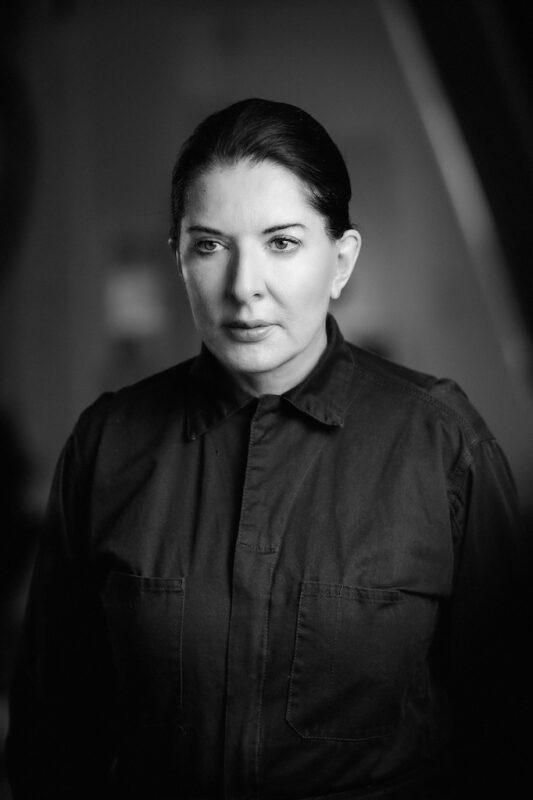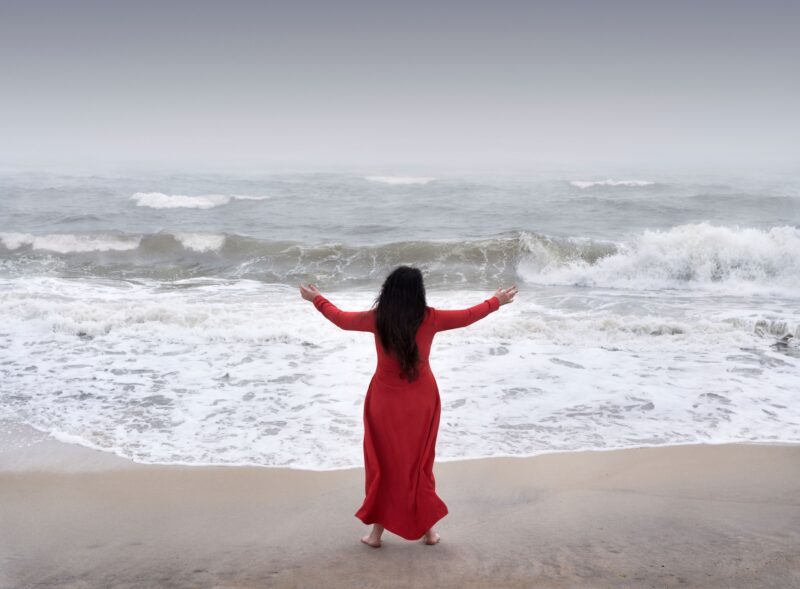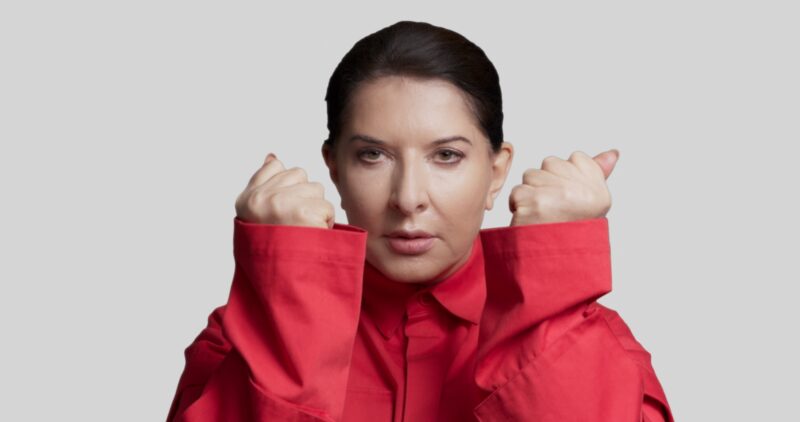For centuries, Western art traditions have been centred on creating tangible and physical objects such as paintings, architecture and sculpture. Viewing art therefore, has been about seeing and looking. In contemporary art today, often something non-tangible must be accepted, even momentarily, to allow the artist to make their intended impression.
An example I have in mind is Marina Abramovi?’s 512 hours which was exhibited at the Serpentine this summer 2014. After reading sceptical review after sceptical review, I was sceptical about visiting the exhibition; wary of the winding queues reaching into Hyde Park and the building of unnecessary anticipation. Returning back to my locker twice, to deposit my phone, then my watch, I put on the sound muffling headphones.
Inside the gallery people walked about with their eyes closed adopting trance-like positions, slowing pacing, sitting, standing and lying. I caught the eye of another sceptic and we smirked at each other. When I saw Abramovi? though, I got it. She has an undeniable presence and perhaps following her rules is the only way to attempt to understand her experiences. The BBC report of the show includes a quote from Sophie, a sculpture student from London who said, “I really wanted to connect with her, so I said a little prayer,”.
I decided almost instantly that I agreed with the majority of London critics. Richard Dorment’s piece for the Telegraph titled “I hated every second but I can’t deny its power” stated “The compliance of visitors was almost worrying”. Ben Luke of the Evening Standard complained, “Abramovi? is asking us to escape the frenetic pace of life, to go deeper into ourselves… But I go to galleries and parks to do this anyway — do I need Abramovi? to bestow this meditative gift on me?”. Similarly, Laura Cummings at the Guardian disliked how Abramovi? took on the role of director for the public, “That this is meant to be Zen seemed implicit in the instructions Abramovi? mouthed in my ear. “Relax,” she says, taking my shoulders in her strenuous grip. I don’t feel like relaxing. A minute passes. “Breathe!” she insists. Not on your orders, lady…”. I liked how Abramovi? had ruffled all these journalists and admired her all the more for it. You can’t help but respect Abramovi? for her commitment to and passion for challenging performance art and her ability to touch and inspire people. Perhaps there is a practiced aura about her, yes, but there is no doubt that she has experienced physical and psychological limits of pain, throughout her life and I would not pretend to reckon with her emotional intelligence.
Although reluctant, I knew that if I didn’t participate then I couldn’t be critical of the show. I dutifully closed my eyes. I focussed. I listened to the sound of human movements, soft muffled sounds and it was enjoyable, decadent. Yet with my eyes closed I couldn’t escape the feeling of the forced environment; the plastic chair beneath me, the white walls, the pretentious art crowd.
I liked Fison Guner of the arts desk’s summary of scepticism and cynicism which I completely agree with: “She (Abramovi?) says she’s well aware of British “cynicism”, thereby misunderstanding scepticism for something else entirely. I happen to value British scepticism, though I don’t think the British have exclusive rights to it. Critics have revolted against Abramovi?’s cheesy grandiosity in New York, too.”
Scepticism, has nothing to do with being closed-minded, distrusting or judgemental. Tom Friedman’s Untitled (A Curse) (1992) was exhibited at Blain|Southern in an exhibition titled, The Space Where I Am. The work is an empty podium above which an invisible globe floats which has been cursed by a witch. There’s nothing there though. Friedman’s idea floats between conceptual art, science fiction and an arrogant humour. I was interested to read how the press release described it as “faith and belief”. Similarly, an interview with the artist with John Waters in Parkett in 2002 opens, with John Waters saying, “A friend who doesn’t follow the art world saw your book and said, “You have to have a real faith in contemporary art to look at Tom Friedman’s work.”” Do you need to have faith in a work to understand it? Let me return to my initial statement: “something non-tangible must be accepted, even momentarily, to allow the artist to make their intended impression.” Acceptance is the word of the sceptic who embraces an idea in order to make a judgement, faith belongs somewhere else.
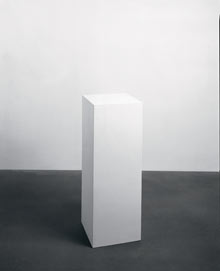
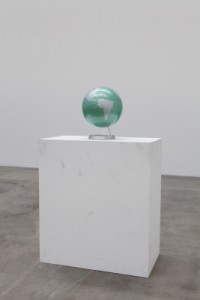
Untitled (A Curse) by Tom Friedman, 1992 Photograph- Image courtesy the artist and Harry Handelsman // globe and/with pedestal by Darren Bader – Image courtesy of Blum and Poe
The artist Darren Bader did a similar work, in reaction, reverence or pure coincidence, titled Globe and/with Pedestal. The globe is in this instance physically located above the pedestal, the witches curse however is not stated or visible. I am reminded of a discussion I once had with Bader at one of his exhibition openings at Sadie Coles Balfour Mews a couple of years ago. One of his works, Lasagna on Heroin (2012) entailed of a piece of lasagna which had been injected with heroin. I had to take it from Bader that it had indeed been injected with heroin, and again, although it was something which was tangible to believe, I had to trust Darren and he could easily be lying for the sake of the concept and equally enough he could be telling the truth. This time, I couldn’t hide my smirk, it showed openly and I knew he enjoyed it. I enjoyed it too. We both enjoyed it and that was it.
Scepticism, therefore should not be underestimated or burdened by negative associations. It seems that trusting and allowing an artist to open your mind is all part and parcel of the contemporary “viewing” experience. A sceptic may be harder to convince, but let that be a healthy challenge for all artists.
By Harriet Thorpe

‘Lasagna on Heroin,’ 2012. (Courtesy the artist and Sadie Coles)
